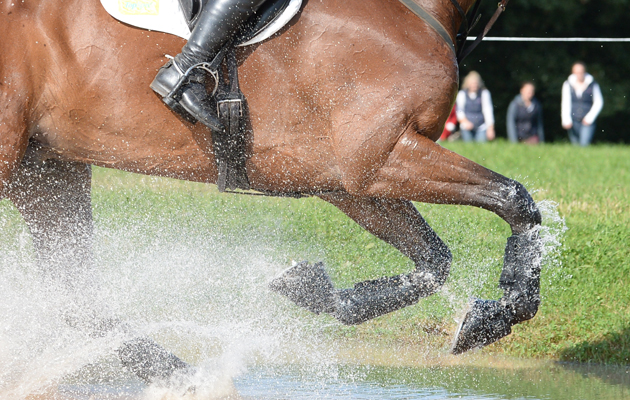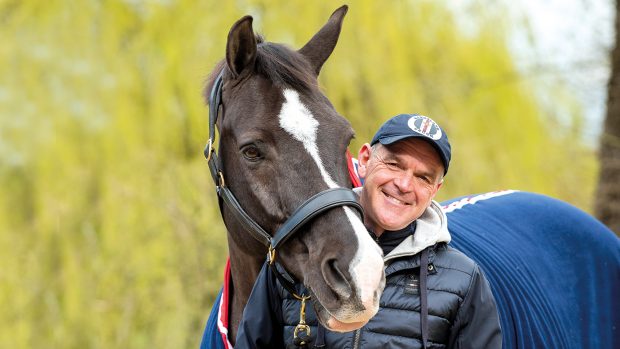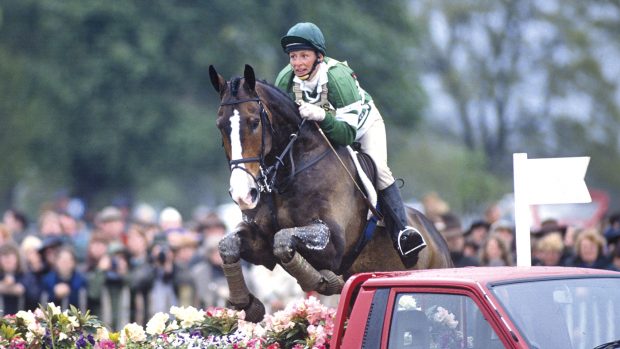We ask the experts to tackle some common cross-country problems, from dealing with green horses to keeping your horse focused
1. Fitness tips
Q. What is your advice on getting my horse fit for going cross-country?
A. “The most crucial thing with fitness is to find a regime appropriate for your horse,” advises Francis Whittington. “You can’t just follow a set programme because each horse, even within the same level, needs different work. Get advice from a trainer who knows your horse well and who has practical fitness experience. I also like to take my horses cross-country schooling about once a month during the event season — it builds up their confidence and their fitness.”
2. Tackling skinnies
Q. What exercises should I be using to improve how my horse and I jump skinny fences across country?
A. “I do a lot of work on skinnies at home in the arena using single fillers. 2ft is big enough — it doesn’t need to be big,” advises J-P Sheffield.
“Begin by placing poles on the fillers in a v-shape and approach in trot to start. Trot is an easier pace to control and you can place the horse at a deep take-off spot. Never kick for a long stride at a skinny because it gives a horse too much opportunity to run out.
“Then place the poles on the ground and attempt it again in canter — make sure your canter is short and bouncy and you must sit up. Once the horse feels comfortable doing this, you can make it harder by placing another filler a few strides away in line from the first. This can then be built up to three fillers.”
J-P adds: “By regularly doing exercises like this, skinnies become second nature. If at any point you feel it going wrong, step back one stage until you feel your horse growing in confidence.”
3. Warm-up tips
Q. Do you have any handy tips for warming up before the cross-country?
A. “Start off by jumping the warm-up fence (begin over the smallest fence) in a straight line a couple of times to get you horse in the zone,” advises Angus Smales.
“If you have a corner fence to jump in your course or any angled fences, it is always a good idea to angle your warm-up jump a few times to get your horse’s eye in before you head out across country. Also if you plan to run faster, try jumping the warm-up fence a bit quicker than usual — this will help get his eye in.”
4. Improving straightness
Q. I have taken on an ex-racehorse but I’m having problems with him running out across country and then I feel we both lose confidence. How do we overcome this?
A. “Straightness is the most important factor here. You need to work really hard on teaching him to stay straight,” says Nick Gauntlett. “Using grids at home is the best way to achieve this, but keep them small and easy so his confidence levels are maintained. Try jumping different types of fences, rather than trappier combinations, which will only catch him out.
“When you go schooling begin with straightforward fences, then progress to more complex ones and go back to the easier ones after that to reassure him. If he starts running out again, take him back to basics. Take him to as many small shows and hunter trials as possible so he sees lots of different fences. Build a pyramid of experience from the bottom up.”
5. How to keep focused
Q. I can often feel my mare losing concentration on the approach to fences, usually during cross-country when there are other things to look at. What should I be doing to make her more focused?
A. “It is vital for you as the rider to establish communication with your horse,” says eventing icon Lucinda Green.
“Fundamentally, you need to have a ‘stop’ and ‘go’ button — if she mucks about, you need to go back to basics until she understands discipline. Focus your horse’s attention on the fence by putting her in what I call ‘the tube’ — wrap your legs around her, imagining your calves are attached to her eyeballs by invisible wire — and locking on to the fence yourself.
“You might have to get tough with your legs and hands to metaphorically say ‘this is where we are going’ but being tough at the wrong moment will take her focus away from the fence on to evading you.”
6. Is side saddle too dangerous across country?
Q. I have grown up eventing but wanted to try something a bit different last year, so took up side saddle. I have been out hunting side saddle and loved it but would you say that going cross-country is too risky?
A. “There are a couple of things you have to take into account before going cross-country side saddle, as yes, it does present more of a health and safety risk,” says professional eventer and side saddle rider Fiona Davidson.
“In the event of a rotational fall a side saddle rider won’t be thrown clear. Although we hunt over big country you don’t tackle combinations in the same way you do on a cross-country course and rotational falls are rare out hunting.
“Current British Eventing rules prevent you from competing affiliated side saddle, but I do feel riding side saddle leads to a marked improvement in how you ride. You sit up straighter and this carries through to when you ride astride so you can hope to do a much more elegant dressage test.
“When you ride side saddle you are forced to keep your shoulders more upright — allowing for a cleaner jump. You will see some horses definitely jump better with a side saddle rider rather than one that is astride.”
7. Bringing back confidence
Q. I suffered a bad fall last season while going cross-country and I now lack confidence when out competing. What can I do to rebuild my cross-county confidence?
A. “Keep things simple by spending time perfecting the smaller fences and simpler tracks, which will provide a great boost,” says Mary King.
“At home, for example, start with a cross-pole to get going. Consider going back to a lower level to regain some confidence and remember you don’t have to do anything, so remove any expectation of yourself to do things that you aren’t completely confident with. If you don’t want to move up a height or level then don’t.
“If things go wrong there must be a cause, so go back to the early stages to iron out any issues. It is useful to have someone on the ground to assess you and the horse.
“Two final things. One, relax and have fun. Nobody enjoys being stressed and horses are good at sensing it. Secondly, get out there. Whether it is showjumping, a clinic or local show they are a good way to stay familiar with a competitive atmosphere.”
8. Seeing a stride
Q. I have recently bought a new horse and want to take him cross-country schooling, but I’m worried my ability to see a bad stride will be detrimental to his training. What should I do?
A. “Take your horse cross-country schooling and start off with some simple logs just to see how he reacts,” advises top rider Nick Gauntlett.
“The biggest difference between eventing and showjumping is that most eventers ride a rhythm and most showjumpers see a stride. You need to believe in the rhythm and ride strong, instead of worrying about seeing a stride. Make sure your horse is going forward and in front of the leg to give him confidence.
“I can guarantee a good rhythm is better than a good stride.”
Like this? You might also enjoy reading these:
7 jumping questions you thought were too obvious to ask
10 training tips that top riders swear by
9. Knowing when your horse is ready to event
Q. I have a four-year-old who I want to start eventing soon but he is very green across country. What can I do to help him become more confident?
A. “It is important with a four-year-old not to push him too much, you have to learn to have fun. There is no need to hurry a youngster — sometimes less is more,” says Nick Gauntlett.
“Make sure that you are always riding positively and use your lower leg to keep his canter engaged. Keeping your hands wide will help him focus and never be tentative on the approach to a fence — he needs to be forward-thinking.
“Once you feel your horse is positive and balanced cross-country schooling go and do some hunter trials — but make sure they are well built and the ground is good — before taking him to an affiliated competition. Most importantly, give him time to grow up and enjoy it.”



